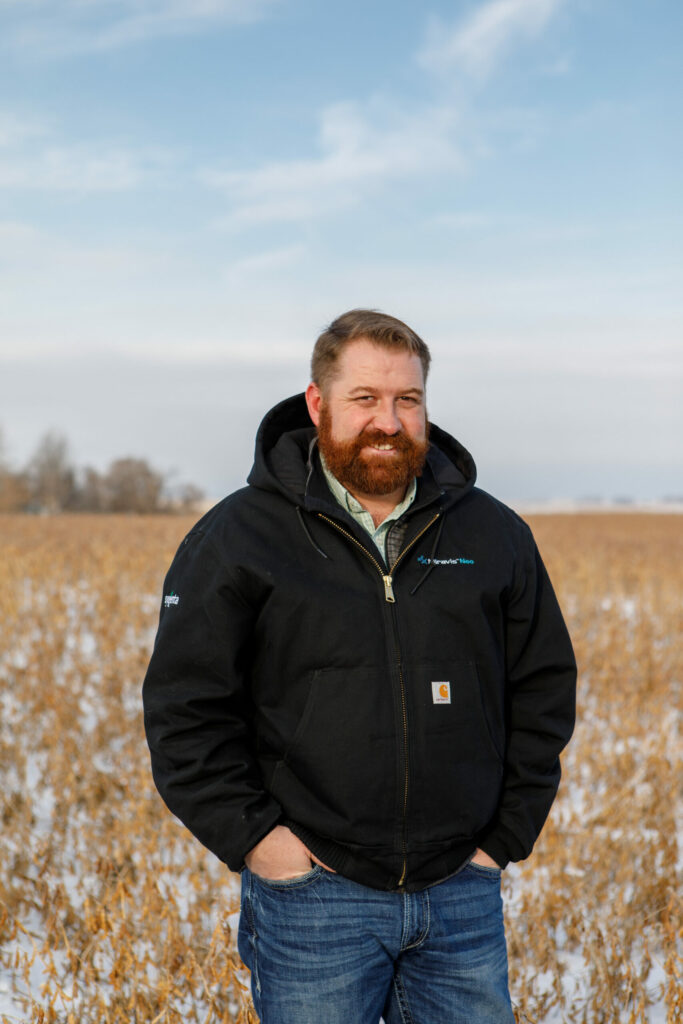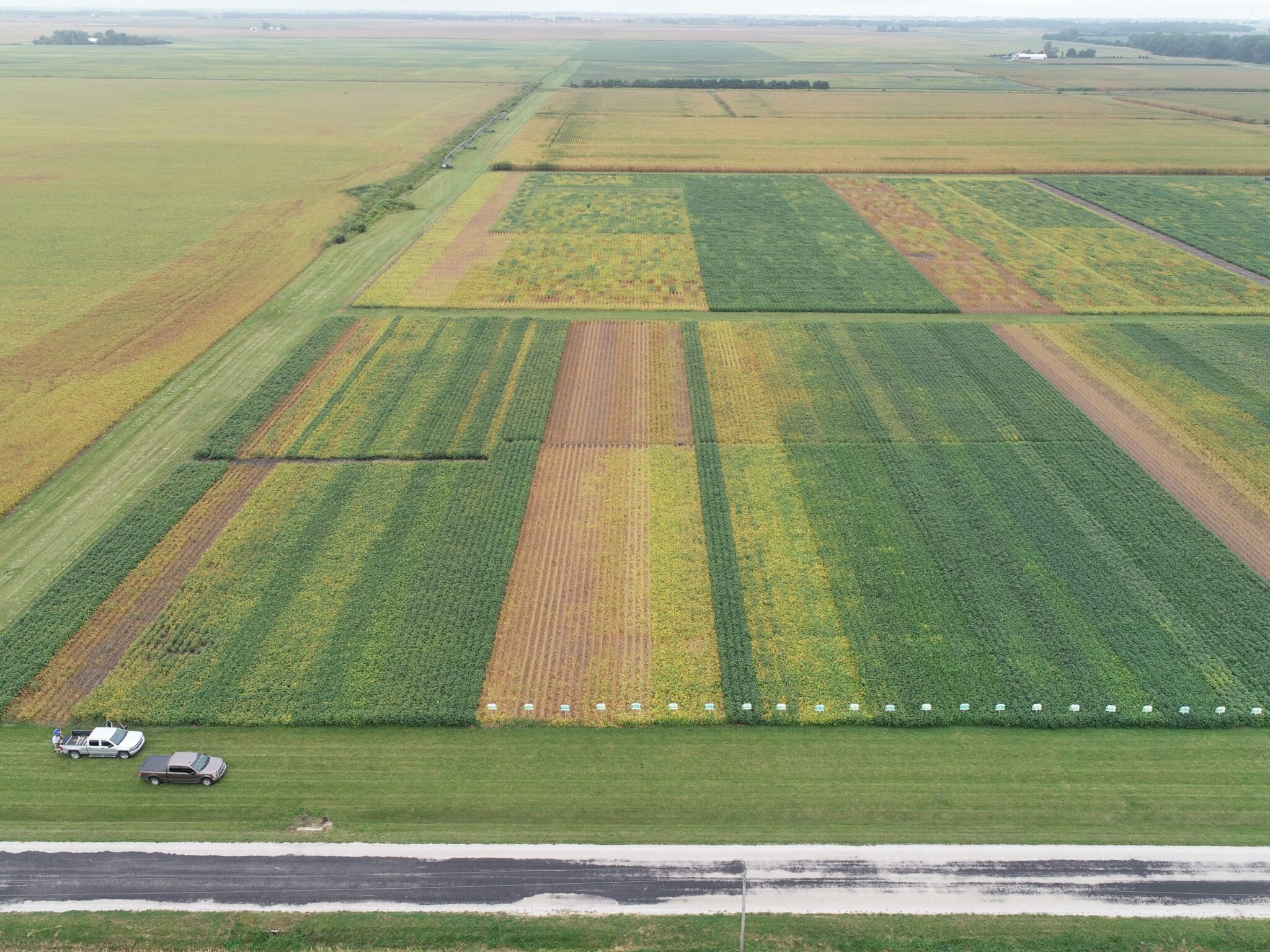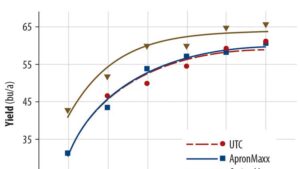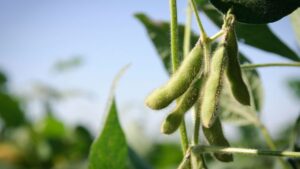U.S. soybean production is expected to be strong again in 2021. Experts from across the country explain why that is expected to be the case and what some of the issues to watch will be for producers.
With the COVID-19 pandemic still gripping the world, forecasting what 2021 holds in store has become even more challenging for businesses than it already was.
It’s no different for soybean producers as they begin planning for the year ahead, making decisions of everything from how many acres to plant to selecting the inputs that are right for their operation.
“The big question on a lot of people’s minds right now is what is global demand going to be,” says Mike Dillon, global portfolio lead for soybean for Corteva Agriscience.
“As we’ve seen, the impact of the pandemic and the previous outbreaks that have impacted hog herds in China as well as demand for meat in local restaurants, those types of situations have an impact on the amount of soybeans that are needed for meal, which is the primary usage on a global basis and which translates into demand sooner or later. There’s a lot of questions in the market about how many beans are needed … and how do U.S. producers respond to that.”
Despite those questions, many industry experts remain bullish about the immediate future of soybeans. In fact, early indications suggest acres will be comparable to 2020 when we saw a large increase over 2019, a year that we had significant weather challenges.
Allen Gent, head of U.S. soybean business for BASF, says most of the forecasts he’s seen are predicting the number of soybean acres in the U.S. in 2021 to be between 83 and 85 million and production forecasts looks favorable for seed supply.

“Until harvest actually happens you never really have the full picture, but everything that we’re seeing today from the standpoint of just looking at the crops it’s looking like it’s going to be a very good production year for this coming season,” Gent says.
Encouraging Sign
Another encouraging sign for soybean production, according to Dillon, is the fact that soybean prices have started to rise again. That in turn is making soybeans a more attractive option for some growers.
“Certainly, we’re seeing some positive moves here in the last couple of months on soybean prices,” he explains. “That’s getting people to take a pause and look at the situation and say, hey, having a few more bean acres in the coming year would be a good thing for my operation.
“The good news is that there’s a good foundation here. With improved pricing, there’s some opportunities where you can be profitable with soybean production.”
Still, that optimism has been muted somewhat by the uncertainty over the tools growers will have available to them in 2021 to help protect their yields.
The U.S. Environmental Protection Agency (EPA) has been considering if it will grant new registrations for the in-crop uses of dicamba herbicides with additional use restrictions. By mid-October, the agency had still not handed down its decision, but indicated it was likely to do so sometime this fall in order to give farmers enough time to make informed buying decisions in a timely manner.
“We’re anxious to see that,” Dillon says.
“Based on our knowledge, we anticipate there will be a federal label for dicamba usage in over-the-top applications for soybeans of some type. What that looks like as far as cutoff dates, setbacks, restrictions, additives, we don’t know. Of course, we may have additional state-by-state implications as well that can’t be contemplated until the federal label is out and states can think about how they want to react or adjust.”
Dillon’s best advice to soybean growers when it comes to protection is to make sure they incorporate both a fungicide and insecticide into whatever their seed treatment plan is. An insecticide is important, he says, because it provides early protection against predators such as bean leaf beetles which can be problematic in early planting situations. The fungicide protects against a wide range of seedling diseases a producer may face in any given year.
From a trait standpoint, Dillon says his company is particularly excited about its Enlist E3 soybean trait technology package which delivers three herbicide tolerances (2,4-D choline, glyphosate and glufosinate). The transgenic soybean event in Enlist E3 soybeans was jointly developed by Dow AgroSciences and M.S. Technologies. First introduced in the United States in 2019, it accounted for 20% of U.S. acres in 2020 and the company is expecting that number could rise to 30% in 2021.
“Those three herbicide modes of action give the farmer some flexibility. We’re big fans of flexibility and multiple modes of action,” he says.
“We feel very confident about what that trait package can do for the farmer. We don’t see any concern with how it works with the germplasm, so we feel really good about the productivity gained. Farmers can match up the best germplasm available with this leading trait and really get out there in a material way.”
Resistance Concerns
Shawn Conley is a soybean and wheat extension specialist with the Department of Agronomy at the University of Wisconsin. He says one of the biggest issues for soybean producers heading into 2021 is herbicide-resistant weeds, particularly in hotter climates like the southern U.S.
That concern has been compounded, he says, by the fact the EPA is reviewing some herbicide technologies and growers weren’t sure what tools might be available to them as they began preparing for next season.

“I think the EPA will allow this technology because there’s too much money invested in it for it not to be out there. I think what will happen is just a narrower application window,” he says, adding that any limitation in technology use could potentially have an impact on the availability of some traited seed. Conley stresses that overall seed availability isn’t likely to be a concern even with more soybean expected to be planted in 2021.
Conley says it’s up to individual growers to choose the trait package that best caters to the needs of their operation. However, he urges growers to avoid relying solely on just a single effective mode of action, regardless of the trait platform they purchase. It is vital to take an integrated approach that incorporates both an effective pre-emergent herbicide upfront and a combination of effective chemistries in-season, coupled with other cultural weed management strategies.
Another factor soybean producers should consider is seeding rate. Conley says some growers are cutting back seeding rates to help trim input costs. That normally isn’t an issue since a modest cut likely won’t result in a lower yield, he explains, but problems can arise when the seeding rate is pushed too far.
“When it’s cut back too far that can be a concern because (soybean plants) are competition for the weeds. They need to balance their seed rate with whatever weed management system they have. Don’t cut back so far that you are losing a tool to help manage the weeds,” he says.
Focus on Weed Control
Nathan Popiel, an agronomy service representative for Syngenta in Bismarck, N.D., agrees that weed control will be a primary focus for most soybean producers in 2021. That’s largely due to ongoing weed resistance issues and the uncertainty over the use of certain products such as dicambas.
It’s particularly a concern for producers in northern states like North Dakota, he adds, because of broad swings in local weather patterns. That’s especially true during a dry spring because pre-herbicides are rain-activated and may be less effective.
Another concern for many soybean growers in northern states like North Dakota, Minnesota, Iowa and parts of Missouri, is a recent rise in cases of sudden death syndrome, a plant disease caused by a soil-borne fungal pathogen. It was first discovered in North Dakota in 2018 and was present again this year in Richland and Cavalier counties.
One of the best weapons in the fight against soil-borne diseases and pests such as soybean cyst nematode is soil testing, according to Popiel. Testing can help make it far easier to manage challenges such as the soybean cyst nematode because it alerts growers to their presence far earlier when their numbers are much smaller.
Popiel says his company is particularly pleased with the performance of its Cruiser Maxx Vibrance seed care package that offers a complete suite of fungicides along with an insecticide. It offers a full protection platform against insects as well as a range of diseases including fusariums and pythiums.
In terms of seed protections and treatments, Syngenta is offering the fungicide-specific Vibrance Trio. It consists of three active ingredients (fludioxonil, sedaxane and mefenoxam) with each providing a different mode of action against fungal pathogens.
Popiel’s advice to soybean growers on seed treatments is to exercise caution when considering custom blends.

“In some situations, a custom blend is a great thing for a user,” he says. “But in some situations, customs blends are not a great thing for the end user because you can take a specific active ingredient load and pull that load way back. The problem is you’ve suddenly got a less expensive product that is not going to do what you expect it to.”
Securing Your Supply
With some of the uncertainty over what herbicides and treatments might be available to use next season, BASF’s Gent suggests soybean growers secure their seed supply early.
“There’s going to be enough supply out there to satisfy the acres, but you want to make sure if you are a grower you are securing your supply and getting the variety you want,” he says. “There’s a lot of complexity in the market right now and a lot of it’s going to come down to a grower making sure that they secure the variety they want for their farm.”
In terms of weed control traits, Gent says it’s important for growers to consider the choices available to them. He says that’s why BASF has focused on offering a wide range of seed varieties including Credenz and Xitavo.
“If we look at the trait landscape what we’re trying to do is enable choice across the board for growers,” he says. “Weed control has been a complex thing for growers for quite some time and we’re getting to the point where we’re having a lot of multi-stacks within traits. With LibertyLink being a component in all the new soybean trait stacks, this is allowing the grower to move from one system to another and look at what’s the proper rotation or management on their farm for the weed dynamics and pressures they have.”
One of BASF’s more popular recent offerings is the Xitavo soybean seed with Enlist ES which it is marketing as part of an exclusive deal with MS Technologies. It features a triple-stack herbicide (Liberty herbicide, 2,4-D choline and glyphosate) tolerant trait and provides growers with multiple modes of action against troublesome weeds.
“We’re seeing a big uptake on Enlist in the market,” Gent explains. “I think growers are going to see that as a strong choice in the market in 2021.”













